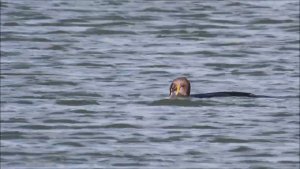-
Welcome to BirdForum, the internet's largest birding community with thousands of members from all over the world. The forums are dedicated to wild birds, birding, binoculars and equipment and all that goes with it.
Please register for an account to take part in the discussions in the forum, post your pictures in the gallery and more.
ohio
-
S
Swift ID - Ohio, United States
I've been having trouble identifying the type of swift I spotted at a park yesterday (June 16). There were about six of them in a bird house next to the parking lot. They were brown/grey and white, which made me think they were chimney swifts, but their bellies were white and their entire heads...- SwiftsAndSwallows
- Thread
- identification identification help ohio ohio birds swift
- Replies: 5
- Forum: Bird Identification Q&A
-
Double-crested Cormorant battling American Gizzard Shad
Here is a short video showing a Double-crested Cormorant (Nannopterum auritum) attempting to swallow what appears to be an oversized American Gizzard Shad (Dorosoma cepedianum). The fish species is uncertain and I would appreciate if anybody can confirm its identification.- jmorlan
- Media item
- american gizzard shad double-crested cormorant nannopterum auritum ohio usa video
- Comments: 2
- Category: North America
-
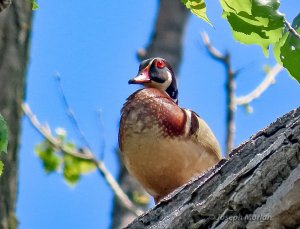
Wood Duck
This is a male. One of the more colorful but wary North American endemic ducks, I like the way the iridescent violet color glows on the chest and the bright red eye in this photo. They prefer wooded swamps where they often hide in deep shade. This one was perched with a female on a horizontal...- jmorlan
- Media item
- aix sponsa ohio usa wood duck
- Comments: 3
- Category: North America
-
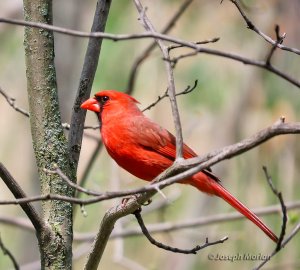
Northern Cardinal
Named for the male's bright red plumage, this species is a widespread resident throughout much of eastern North America south to Mexico. This is a male. Females are much duller. They have expanded their range northward since the 19th century taking advantage of bird feeders. They go by a number...- jmorlan
- Media item
- cardinalis cardinalis northern cardinal ohio usa
- Comments: 5
- Category: North America
-
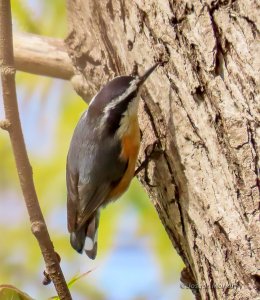
Red-breasted Nuthatch
The black crown and mask, along with the fairly bright red color to the underparts suggest this is a male. We were not expecting to see this irruptive winter visitor here at this season, but this individual remained in the area for at least four days and was the only one we saw on our visit...- jmorlan
- Media item
- ohio red-breasted nuthatch sitta canadensis usa
- Comments: 5
- Category: North America
-

Indigo Bunting
This is a near adult male but the brownish primary tips suggest retained juvenile feathers. They breed here in eastern North America where they replace the western Lazuli Bunting. In winter they often form flocks with other species in the tropics such as the smaller Blue-black Grassquit. Note...- jmorlan
- Media item
- indigo bunting ohio passerina cyanea usa
- Comments: 5
- Category: North America
-

Red-winged Blackbird
This is an adult female. It looks very different from the striking male and these females are often confused with other species. This is one of the most common and widespread of North American birds. Numerous subspecies have been described with birds breeding in Ohio belonging to the nominate...- jmorlan
- Media item
- agelaius phoeniceus ohio red-winged blackbird usa
- Comments: 3
- Category: North America
-
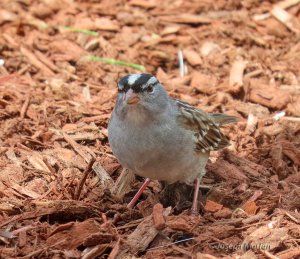
White-crowned Sparrow
This is an adult showing strong black-and-white head stripes. It shows characters of the Eastern nominate subspecies (Zonotrichia leucophrys leucophrys) which differs from most Western populations in its dark lores. This species is famous for having geographically defined song dialects. Unlike...- jmorlan
- Media item
- ohio usa white-crowned sparrow zonotrichia leucophrys
- Comments: 4
- Category: North America
-
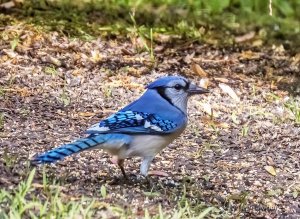
Blue Jay
This common but attractive Eastern North American species was visiting feeders behind glass at a park interpretive center called "Window on Wildlife." Here its crest is lying down flat. This is presumably the northern race "C. c. bromia" characterized by larger, more extensive white markings on...- jmorlan
- Media item
- blue jay cyanocitta cristata ohio usa
- Comments: 3
- Category: North America
-

Eastern Kingbird
This is the most widespread kingbird in North America and the only species breeding in most of the East. It is a long distance migrant with virtually the entire population wintering in the western Amazon Basin in South America. Unlike most songbirds, kingbirds frequently migrate during the day...- jmorlan
- Media item
- eastern kingbird ohio tyrannus tyrannus usa
- Comments: 2
- Category: North America
-

Cape May Warbler
Here is a male Cape May Warbler. On its breeding grounds in boreal forests of Canada, it is a Spruce Budworm specialist. But in the winter it the tropics, its unique curled tongue allows it to specialize on flower nectar. Its scientific name "tigrina" is for the tiger stripes on its underparts...- jmorlan
- Media item
- cape may warbler ohio setophaga tigrina usa
- Comments: 3
- Category: North America
-
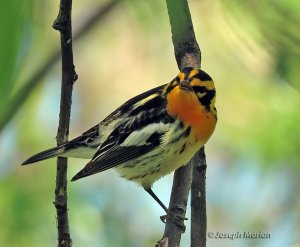
Blackburnian Warbler
This species is a Spruce Budworm specialist on its breeding grounds in the Boreal forests of Canada. It is a migrant in Ohio from wintering grounds in the mountains of northern South America where it specializes in shade-grown coffee plantations. This spectacular warbler is an adult male...- jmorlan
- Media item
- blackburnian warbler ohio setophaga fusca usa
- Comments: 3
- Category: North America
-

American Redstart
Migrating later than most warblers, these active little birds remind me of butterflies. While foraging, they frequently fan their tails and spread their wings. This is an adult male which takes two years to acquire full black and red plumage. The first year males look more like females but...- jmorlan
- Media item
- american redstart ohio setophaga ruticilla usa
- Comments: 5
- Category: North America
-

Bay-breasted Warbler
This male Bay-breasted Warbler is showing its bright rufous cap glowing in the morning sun. This species, along with the Blackburnian and Cape May warblers, vary in numbers annually depending on population outbreaks of Spruce Budworm in the Canadian forests where they breed. A long distance...- jmorlan
- Media item
- bay-breasted warbler ohio setophaga castanea usa
- Comments: 7
- Category: North America
-
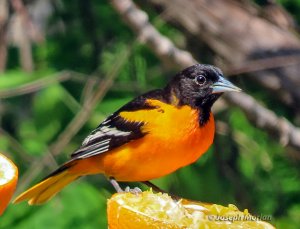
Baltimore Oriole
This brilliant orange and black oriole was attracted to orange halves impaled on twigs near the parking lot. This is an adult male. They are unrelated to the Old World Orioles (family Oriolidae), but instead are classified with the New World Blackbirds (family Icteridae). Although this species...- jmorlan
- Media item
- baltimore oriole icterus galbula ohio usa
- Comments: 4
- Category: North America
-
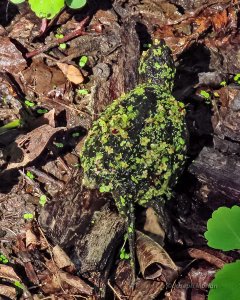
Common Snapping Turtle (Chelydra serpentina)
Covered in duckweed (Lemnoideae), this young Snapping Turtle crawled out of the water and quickly disappeared. This species is widespread in fresh water habitats in Eastern North America. It has recently been divided up into three species, with the South American and Central American snapping...- jmorlan
- Media item
- common snapping turtle (chelydra serpentina) ohio usa
- Comments: 3
- Category: Reptiles
-
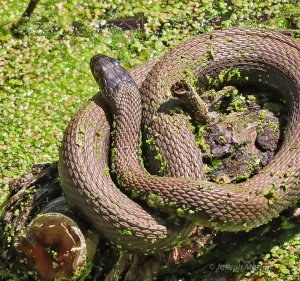
Common Watersnake (Nerodia sipedon)
This is a highly aquatic species. This one is an example of the subspecies "N. s. insularum" which has a very limited distribution around Lake Erie. It is sometimes known as the Lake Erie Watersnake and, as seen here, can be distinguished from other races by its complete lack of dorsal bands...- jmorlan
- Media item
- common watesnake (nerodia sipedon) ohio usa
- Comments: 0
- Category: Reptiles
-

Palm Warbler
This species was a scarce migrant in this area and this is the only one we saw. It appears to be a member of the nominate western subspecies which is duller than the eastern race. The reddish crown and yellow undertail coverts help identify this species along with its characteristic tail...- jmorlan
- Media item
- ohio palm warbler setophaga palmarum usa
- Comments: 3
- Category: North America
-

Eastern Screech-Owl
Appearing to scowl disapprovingly, this is a gray morph adult roosting very high near the boardwalk.- jmorlan
- Media item
- eastern screech-owl megascops asio ohio usa
- Comments: 3
- Category: North America
-

Eastern Screech-Owl
We returned to the boardwalk where we found this recently fledged juvenile Eastern Screech-Owl. Note the wispy down feathers attached to the tips of contour feathers giving this bird a decidedly fluffy appearance. Also the well barred pattern of the underparts is typical of juveniles. The two...- jmorlan
- Media item
- eastern screech-owl megascops asio ohio usa
- Comments: 4
- Category: North America
-
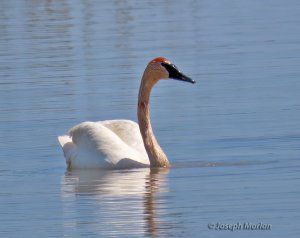
Trumpeter Swan
The rusty neck stain is from iron oxide in the water. Trumpeter Swan is the largest of our waterfowl. Formerly endangered, Ohio started to reintroduce these swans in 1996. As a consequence, the species has increased dramatically here. In 2021, the number of breeding pairs was the highest on...- jmorlan
- Media item
- cygnus buccinator ohio trumpeter swan usa
- Comments: 3
- Category: North America
-

Dunlin
These Dunlin are in full breeding plumage. Dunlin migrating through Ohio are "C. a. hudsonia" characterized by breast streaking connecting to the black belly-patch, without intervening white. They breed in arctic Canada.- jmorlan
- Media item
- calidris alpina dunlin ohio usa
- Comments: 3
- Category: North America
-

GreatCrested Flycatcher
Flycatchers in the genus "Myiarchus" are notoriously difficult to identify except by their vocalizations. Most sources emphasize subtle differences in the distribution of red in the tail, but this widespread species of Eastern North America is perhaps more readily identified by a combination of...- jmorlan
- Media item
- great crested flycatcher myiarchus crinitus ohio usa
- Comments: 4
- Category: North America
-
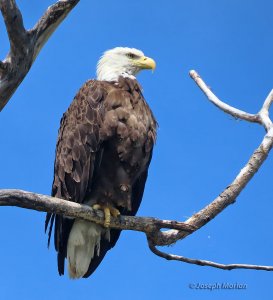
Bald Eagle
Our national emblem, this imposing full adult looks out imperiously from a perch over Crane Creek. Not really "bald" but white-headed, this species has increased markedly as a breeding species. Their earlier nationwide decline was primarily a side-effect of the pesticide DDT which caused...- jmorlan
- Media item
- bald eagle haliaeetus leucocephalus ohio usa
- Comments: 2
- Category: North America
-

Scarlet Tanager
This adult male is showing brilliant scarlet red with black wings and tail. Not actually a true Tanager, it is one of nine species in the genus "Piranga" which have been moved from the Thraupidae (Tanager family) to the Cardinalidae (Cardinal/Grosbeak family).- jmorlan
- Media item
- ohio piranga olivacea scarlet tanager usa
- Comments: 4
- Category: North America




